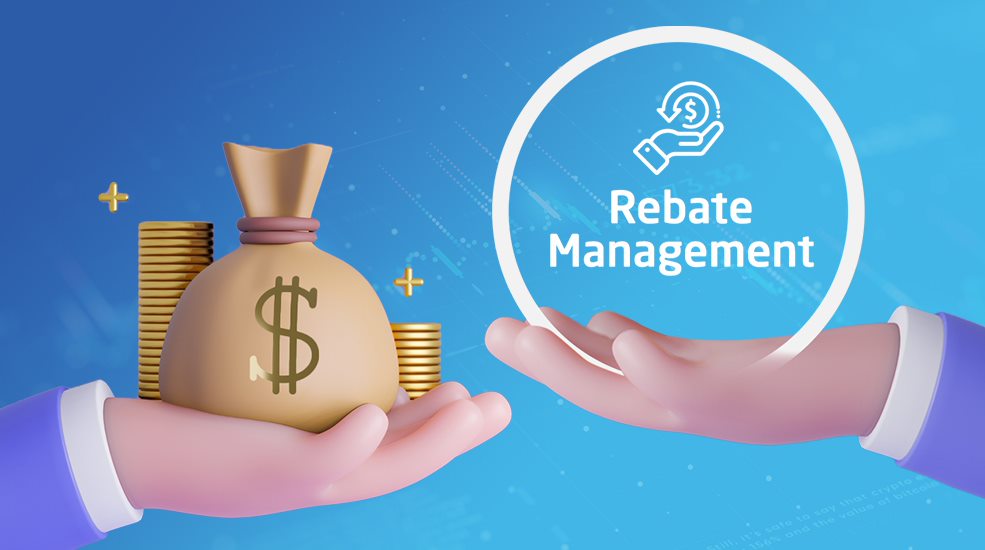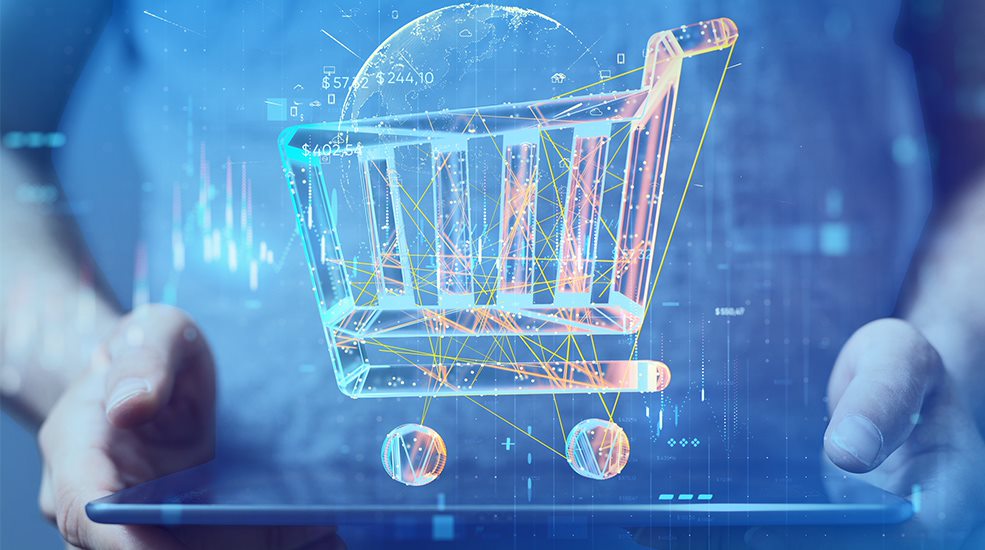Rebates vs Discounts: What’s the Difference?
November 28th, 2022 (Updated 03/09/2023) | 9 min. read
By Iain Lewis
Taking advantage of price rebates and discounting is an excellent method for driving additional sales, especially if you are just getting started or scaling up your B2B organization. Even if you’re an established B2B company and you are looking to introduce a new line of products to your client base, you may need to consider rebates or discounts to get the sales ball rolling. In B2B pricing, rebates and discounts can be pricing best practice if the conditions are right. In some situations, it may be preferable to use customer rebates for their consumer loyalty or buying volumes instead of giving your clients discounts that they haven’t yet earned. Doing so may open you up to losses as your net profits dwindle. So, before you dive headfirst into the world of price rebates and discounts, in this article we’ll run through an explanation of Rebates vs Discounts, highlight the differences, and examine when you may want to consider using each in your company’s pricing strategy.
At Pricefx, we have spent the better part of a decade in the business of providing rebate management software to enterprise-level businesses like yours as part of a total pricing solution. So, with that expertise in rebate management and its role in pricing in general, we are perfectly placed to provide you with all the rebates vs discounts information you need.
Let’s dive in and examine what rebates and discounts are exactly and how each can be used in your organization’s pricing regime before we examine which of the two buying incentives might suit your business and when. We’ll even include a bonus section to help you select the right technology for you to maximize your business outcomes for both rebates and discounts.
What Are Key Differences Between Rebates vs Discounts?
In the B2B sales environment, Rebates and Discounts are both beneficial to the customer in the end as both incentives ensure that the customer for their products. However, this is where the similarities end. The terms differ in how the customer receives the incentive, the time period involved and where and when they are used.
What Are B2B Rebates?

Much of global trade goes through B2B sales channels before reaching the end consumer, and a significant amount of this activity involves some type of rebate program. Manufacturers often deal with customer rebates, which reward distributors, retailers and buying groups for driving volumes and winning their loyalty, all while driving mutual and strategic growth.
B2B rebates are typically financial incentives given by a manufacturer or supplier in order to motivate their customers to perform a certain action (such as increasing volume or spend or purchasing add-on items) to drive sales and profitability.
As this usually occurs over a set period, the customers usually receive their rebate payment at the end of an agreed period or when the requirement is complete instead of an upfront discount.
Subsequently, both sides of the business relationship come together to win, serve, and retain valuable customers.
How Are B2B Rebates Paid? The Accruals Process
So, if you are offering your B2B customers rebates on say, purchasing more than 10 000 units of your products, eventually your customer is going to come knocking and say ‘Hey, I purchased my 10 000 products and met the criteria of the rebate agreement – where’s my rebate payment?’
Paying rebates is known as the accruals process. Managing rebate accruals can be a complex process if the task is undertaken manually.
At its simplest, a rebate accrual is the expectation of income to be received at a later date. Often, the rate at which your business earns rebates can differ from the rate you receive them.
For example, you may earn rebates quarterly, based on your volume of purchases from a certain supplier. However, that same supplier might only pay the rebate annually not quarterly.
This means that the rebate income must be accrued – even though the money isn’t in the bank yet – in order to accurately calculate profit and loss.
Further complications can be encountered when agreements are updated or changed mid-period (as often happens), or when the incentives themselves are tiered – for example, one rebate accrual calculation can depend upon others earlier in the chain.
Sounds tricky right? Relying on spreadsheets to perform manual calculations of rebate accruals over multiple agreements with multiple customers can be a recipe for disaster. Not only does it slow down the whole rebate process, but it can lead to miscalculations of rebate amounts that are due, a misreporting of profits on income statements and if things really turn sour, a breakdown of relationships between businesses.
Transform Your Rebates Claims & Accruals Procedures
Managing the claims and accruals to pay your clients their rebate money owed on time/every time is another critical (and arguably most important) feature of rebate management software.
With rebate management software you can track in real-time visibility over how many sales have been accrued, program eligibility, validity, exceptions, etc. Track the performance and effectiveness of any rebate and receive and process rebate claims in a way that is transparent and as error-free as possible.
______________________________________
Learn More Here About How Bosch Thermotechnik Increased Rebate Efficiency with Pricefx
______________________________________
Quality rebate management software supplies systematic, timely, accurate program claims validation plus the ability to forecast accruals on orders or invoices and calculate payouts.
What Are B2B Discounts?

In the B2B environment, discounts (frequently referred to as the take-all term ‘promotions’ in the B2B environment) are typically applied at the point of purchase to reduce the buying price. In other words, when you receive an invoice, you pay the discounted value. It’s all very immediate.
The discounted price is visible from the moment of purchase and therefore offers immediate satisfaction for customers.
The most common discounts are cash discounts, volume discounts and trade discounts;
- Trade discounts are the amount by which a manufacturer reduces the retail price of a product when it sells to a wholesaler. This can be an important pricing tool to promote B2B sales
- Volume discounts encourage buying in bulk
- Cash discounts are given for early or prompt payments, aiming to accelerate cashflow.
On most occasions the purpose of a company offering a discount is to increase short-term sales, move out-of-date stock, reward valuable customers, and maintain better business relationships, and/or to ensure sale targets are met.
Customers may also choose your product or service over your competitors if your prices are heavily discounted.
Bring Better Insights to your Discount Program with Agreements & Promotions Software
If you are a B2B sales organization, chances are that you may be looking for more insight and details around the range of products your customers buy from you? Do they buy lots of assorted products across your whole entire product portfolio or are they extremely focused on purchasing from one of your specific product lines?
Knowing that information can be critical in knowing when to discount, to whom, on what and by how much.
For example, do you know if your customers place large orders, or if they have a range of unique requirements?
Are they meeting the terms of your business agreements to secure their discounts, or are they missing the mark?
When you have access to better segmentation of your customers, you can arrange for more appropriate and better pricing that will secure win-wins for you, and for them.
By putting yourself in a position to know more about your customers through customer segmentation, you can understand them better and supply them with pricing that is relevant to them and your unique relationship with that organization.
Leveraging customer segmentation with price optimization software and then applying that information through an Agreements & Promotions Management system will allow you to maintain that unique customer pricing in a much better, targeted and more specific way including the ability to;
- Identify regional and seasonal discounts for different segments of customers
- Apply standard discounts for a particular product group that should be always added for the volume purchase above ‘X’ number of units
- Assure that your customers automatically receive the discounts that were negotiated.
- Limit the possibility to use discounts that drain margins and affect your profitability.
- Manage condition term types using logic with predefined elements/parameters
- Create and maintain agreements
- Perform agreement calculations
- Execute approval workflows
- Manage and track discount records
Managing discounts and agreements with a Agreements and Promotions tool brings much visibility and clarity to what your discounts are, how appropriate they are for your customers and for how long they have been in place.
For example, if your customer has made a purchasing volume commitment of 20 000 units – using your Agreements and Promotions software tool, check easily and in real-time if they are on track to purchase that number. Remind them if they are behind the discount target or congratulate them if they have reached the number ahead of time. Either way, you are maintaining a strong and transparent business relationship.
Using the insightful technology, you can begin to measure how your customers are performing in a much clearer way and how their next set of discounts may evolve into the future into personalized ones.
Which Rebate Management Software Should I Choose?
Now you know the difference between rebates vs discounts and that a complete rebate management software system combined with total pricing software solution can help you provide efficiencies and profit opportunities that you never knew you had.
You may already have an idea if innovative rebate management software like offered as a part of the award-winning Pricefx total pricing software solution or similar is something that can help your organization achieve its business objectives, and you may be wondering which one is right for you.
To find out more about the best rebate management software variants available in the marketplace today, check out the handy article below;
On other hand, if you are already sure that Pricefx is what you are looking for in a combined total rebate/discounts/pricing software management solution package, contact one of our team members now:


